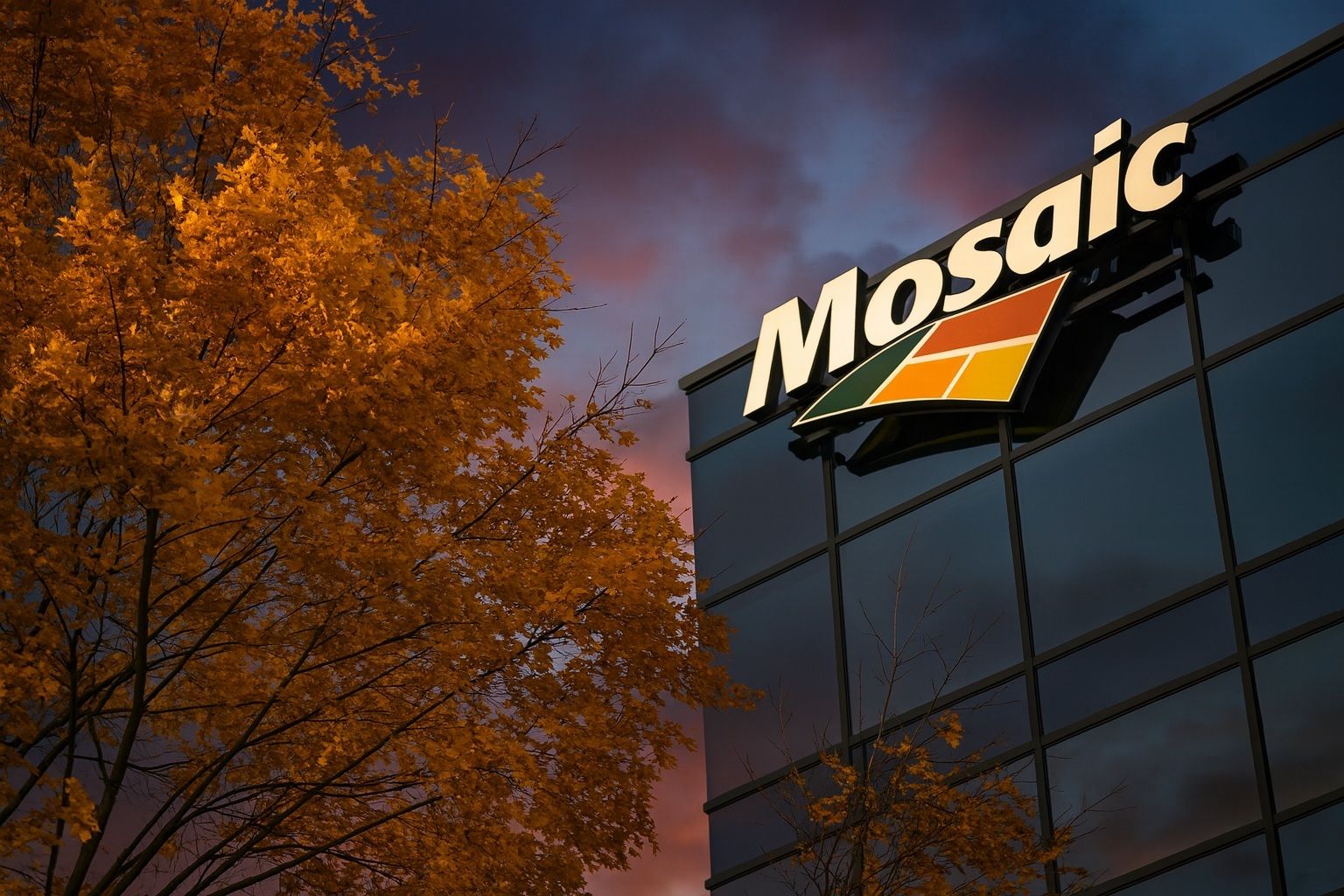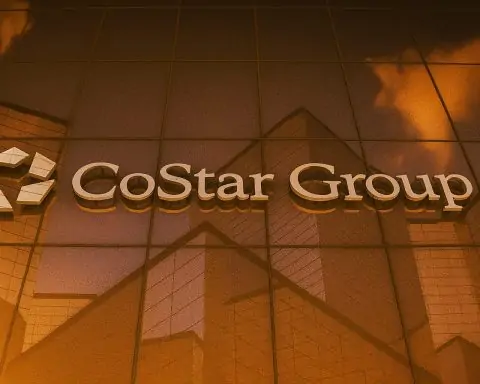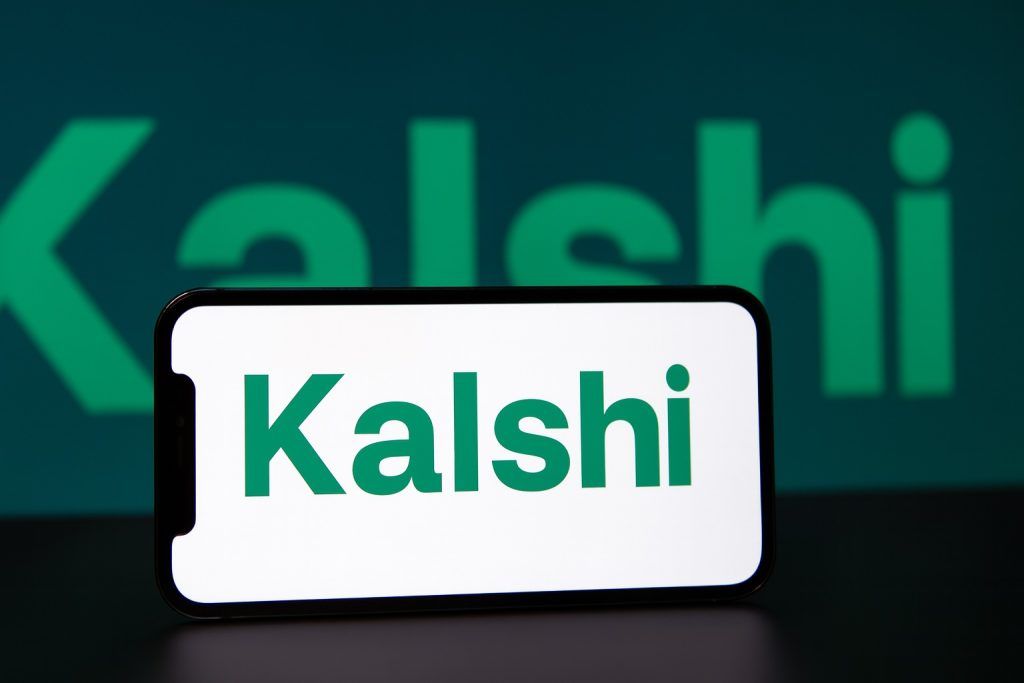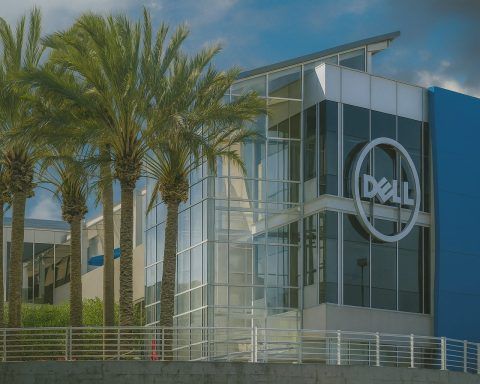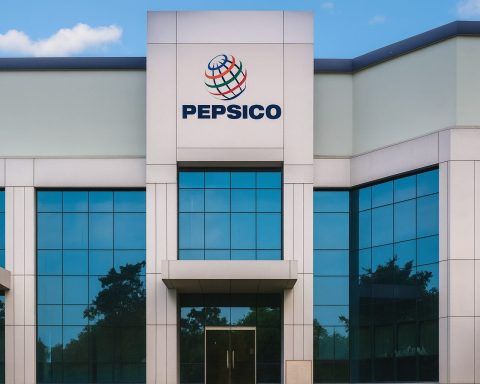- Agriculture Powerhouse: The Mosaic Company (NYSE: MOS) is one of the world’s largest producers of phosphate and potash fertilizers, playing a pivotal role in global agriculture by supplying essential crop nutrients [1]. Its operations span Florida, Canada, and a major Mosaic Fertilizantes arm in Brazil, making it a key player in feeding the world’s growing population [2].
- Stock Slump on Output Miss: Mosaic’s stock plunged to five-month lows in early October 2025 after a surprise shortfall in Q3 production. Shares tumbled about 7–10% to the low-$30s range on October 10, 2025, following news of lower-than-expected phosphate output and analyst downgrades [3]. This pullback erased a chunk of the stock’s recent gains – MOS had rallied to within ~6% of its 52-week high (~$38) by late September before the setback [4].
- Mixed News & Catalysts: Recent days brought a flurry of developments: Mosaic announced preliminary Q3 volumes (phosphate output missed targets due to plant hiccups) [5], completed the sale of an idled Brazil unit for $111 million [6] [7], and faces shifting fertilizer price dynamics amid geopolitical factors. Analysts are split – Scotiabank and RBC cut their outlook on MOS due to the production miss [8], even as Zacks upgraded the stock to a “Strong Buy” on improving earnings estimates [9] [10].
- Technical & Fundamental Snapshot: Despite the drop, Mosaic’s longer-term trend remains positive – the stock is still up ~40% year-on-year and has outperformed peers [11] [12]. However, in the short term it’s testing key support around $32 with momentum indicators neutral (RSI ~45) [13]. Fundamentally, Mosaic trades at a bargain-level P/E ~10 and below book value [14], reflecting cyclically depressed earnings. The balance sheet is reasonably healthy (debt-to-equity ~0.37, ample liquidity) [15], and the stock offers a ~2.6% dividend yield.
- Outlook – Risks vs. Rewards: Going forward, strong fertilizer demand and Mosaic’s cost-cutting drive could provide tailwinds [16] [17]. The company is investing in high-return projects (new capacity and efficiency upgrades) to boost growth [18]. Most analysts maintain a cautious “Moderate Buy” stance with price targets in the $40 range [19] – implying significant upside if Mosaic executes well. Yet risks loom: fertilizer prices remain volatile, and Mosaic must prove it can hit production targets and rebuild credibility with investors [20]. Below we dive into all these factors in detail.
Mosaic at a Glance: Fertilizer Giant Feeding the World
Mosaic is a heavyweight in the agricultural inputs industry, mining and producing millions of tons of potash and phosphate fertilizers each year [21]. Formed in 2004 and headquartered in Tampa, FL, the company is vertically integrated – it owns phosphate rock mines, potash shafts, and processing plants that turn these minerals into crop nutrients like DAP/MAP (phosphate fertilizers) and potash (potassium chloride). These nutrients are critical for farmers globally to replenish soil and maximize crop yields.
Mosaic’s reach is global: it operates huge phosphate facilities in Florida and Louisiana, potash mines in Saskatchewan (including the Esterhazy mine), and a large distribution network in Brazil under Mosaic Fertilizantes [22]. In fact, Mosaic is the largest phosphate producer and one of the top potash producers worldwide [23]. This scale makes Mosaic a key beneficiary (and sometimes victim) of swings in agricultural commodity cycles – when crop prices are high and farmers invest in nutrients, Mosaic thrives, but when fertilizer prices fall, its earnings can drop sharply.
Recent Years Recap: The fertilizer market has been on a rollercoaster. Prices spiked to record levels in 2021–2022 amid pandemic disruptions and the Russia-Ukraine war (which upended global potash trade), boosting Mosaic’s profits. However, 2023 saw a sharp correction in fertilizer prices as supply normalized and farmer demand temporarily softened. Mosaic’s earnings growth turned negative (–24% in the past year) [24], and the stock languished in 2023. By 2025, however, demand and pricing have shown signs of recovery: phosphate prices firmed up again (currently around $700+ per ton) [25] and potash markets have been gradually rebounding as excess inventory clears.
Through it all, Mosaic has focused on streamlining its portfolio and improving efficiency. A notable move was the divestiture of an idled phosphate mine in Brazil (Patos de Minas), which closed in October 2025 for $111 million [26]. Mosaic will book an $80–90 million gain on that sale in Q4 [27]. The rationale is to shed non-core assets and concentrate on higher-margin operations – aligning with an industry trend of focusing on core strengths [28]. Mosaic’s management noted this reduces operational risk and frees up capital to reinvest where returns are better (e.g. North American production) [29].
“The sale of the Brazil unit is a calculated move to reallocate capital, reduce risk, and focus on higher-margin domestic operations,” one industry analyst noted, adding that Mosaic’s agility in reshaping its portfolio “positions it to outperform in a sector where flexibility and capital discipline are paramount.” [30]
In summary, Mosaic stands today as a leaner company centered on its core phosphate and potash franchises. It remains crucial to the global food supply chain, effectively a barometer for agricultural health. Next, we examine how its stock has been performing and why it just hit a rough patch.
Stock Price Check: Recent Performance and Trends
As of October 10, 2025, MOS stock trades around $31–32 per share after a volatile week. Just a couple of weeks prior, things were looking upbeat – Mosaic had climbed about 40% over the past year, vastly outperforming many peers [31]. By late September, shares were changing hands in the mid-$35s, not far from their 52-week high of $38.23 [32]. The stock had also reclaimed key technical levels, rising above both its 50-day and 200-day moving averages – a bullish sign that signaled positive momentum heading into the fall [33].
However, early October brought a reversal. On October 9, 2025, Mosaic’s stock fell nearly 4% in a single session (from ~$34.8 to $33.4) [34]. The very next day, Oct 10, the decline accelerated: MOS tumbled as much as 10% intraday, sinking to ~$30 – its lowest price since May. The slide was triggered by disappointing operational news (more on that in the next section) and amplified by a bearish shift in analyst sentiment. By mid-day, MOS was down about 7% at $31.05 [35] on heavy volume, as traders digested the news.
To put this into context, Mosaic has given back roughly 15–20% from its late-September highs in a matter of days, illustrating the volatility inherent in commodity-linked stocks. Year-to-date, the stock’s performance is now roughly flat to slightly up, whereas it had been strongly positive a week earlier. Notably, Mosaic still outperforms rival fertilizer stocks in the past year – for example, CF Industries (CF) is up only ~8% year-over-year, and Nutrien (NTR) ~13–25%, compared to MOS’s ~40% surge [36] [37]. In fact, over the last 6 months, Mosaic ripped +35%, handily beating the S&P 500’s ~10% gain and the broader fertilizers industry’s 16% rise [38]. This outperformance was driven by improved fertilizer prices and Mosaic’s internal improvements.
Short-Term Technicals: With the recent pullback, Mosaic’s chart has weakened in the near term. The stock is testing a key support zone around the low-$32 level, which corresponds to an important horizontal support from the weekly chart (~$31.97) [39]. This area must hold to prevent further downside – below $32, the next support might be psychological round-number $30. Indeed, $30.17 was touched during the Oct 10 sell-off [40], and a drop under $30 would mark a new multi-month low. On the upside, initial resistance is now around $33.5–$34.5 (a zone of converged moving averages and trendlines) [41]. Above that, stronger resistance sits around $36–$38, near the recent highs [42].
Momentum indicators reflect Mosaic’s in-between status:
- The Relative Strength Index (RSI) is ~45, which is smack in neutral territory (not overbought, not oversold) [43]. This suggests the stock isn’t at an extreme and could swing either way depending on news.
- The MACD (Moving Average Convergence Divergence) recently turned slightly negative, indicating waning upward momentum in the short term [44].
- MOS has slipped below its 20-day and 50-day moving averages (both are now declining – a short-term bearish sign), but crucially it remains above the rising 200-day MA, preserving a positive long-term trend [45]. In fact, a “golden crossover” occurred in May when the 50-day crossed above the 200-day [46], and that longer-term bullish structure is intact despite the recent dip.
Overall, the technical picture could be described as neutral near-term, bullish long-term. The stock’s strong run earlier in the year indicates underlying strength, but the recent breakdown below the 50-day MA means the bulls will need to regroup. If Mosaic can stabilize around current levels (low-$30s) and positive catalysts emerge, it may resume its uptrend. Conversely, failure to hold support could signal more downside. Next, let’s examine why the stock stumbled – the major news impacting Mosaic right now.
Major News & Developments (Late Sep – Oct 10, 2025)
Several significant developments have hit Mosaic in recent days, driving the stock’s gyrations. Here are the key news items as of October 10, 2025 and their implications:
- 🔻 Q3 Production Miss & Preliminary Results: On Oct 9, Mosaic announced preliminary third-quarter 2025 volumes, and it wasn’t all rosy. Phosphate production came in around 1.7 million tonnes for Q3, below management’s expectations [47]. Sales volumes for phosphates were ~1.6 Mt. Mosaic blamed “mechanical and utility interruptions” in mid-September for the shortfall in output [48]. In contrast, the Brazilian Mosaic Fertilizantes segment showed strength – Q3 sales of ~2.8 Mt, up 25% QoQ – and potash production/sales were ~2.3 Mt, stable [49]. The company scheduled its full Q3 earnings release for Nov 4, noting it expects asset upgrades to improve production going forward [50]. However, the immediate takeaway for investors was that phosphate output unexpectedly lagged, raising concern about execution. This news was a catalyst for the stock’s decline, as it suggested earnings might also miss forecasts for the quarter.
- 🔻 Analyst Downgrades (RBC, Scotiabank): The production miss quickly drew reactions on Wall Street. On Oct 10, Scotiabank downgraded Mosaic from Outperform to Sector Perform, slashing its price target to $34 (from $39) [51]. Scotiabank’s analysts cited the phosphate shortfall and even questioned management’s credibility, suggesting “it may take several successful quarters before investor confidence is restored” [52]. Similarly, RBC Capital Markets cut its outlook – according to reports, RBC moved MOS to a Sector Perform (essentially a neutral/hold rating) and warned of headwinds. The stock “fell 10% to $30.17 in early trading [Oct 10]” on the back of RBC’s downgrade and commentary [53]. RBC analysts noted that while Mosaic could benefit from tight phosphate markets, “we see downside risks in phosphate prices given challenged affordability, [and] better operations come with some uncertainty, which may weigh on valuation until phosphate prices stabilize and operations show sustainable improvements” [54]. In short, these analysts are concerned that fertilizer prices might soften and Mosaic needs to prove it can hit its marks – a double whammy for near-term earnings. Notably, RBC also trimmed its price target to just $27 (from $30) [55], one of the more bearish targets on the Street.
- 🔹 Barclays Bucks the Trend: In contrast to RBC/Scotia’s caution, Barclays reiterated an Overweight (bullish) rating on Mosaic on Oct 9 [56]. Barclays’ stance suggests they view the sell-off as overdone or see brighter prospects ahead. According to Fintel, the average 12-month price target among analysts as of end-September was about $41 per share [57], implying double-digit upside from pre-drop levels (and even more upside now that shares are ~$31). Price forecasts do vary widely – recent targets range from lows in the upper-$20s to highs above $50 [58] – reflecting different views on fertilizer price direction. The consensus rating before the latest downgrades was a modest “Moderate Buy/Overweight”. We’ll cover more on analyst forecasts in a later section.
- 🔹 Zacks Rank Upgrade: Interestingly, even as RBC was downgrading, Zacks Investment Research upgraded Mosaic to a Rank #1 Strong Buy on Oct 9. Zacks uses earnings estimate momentum to rate stocks, and the upgrade indicates analysts had been raising MOS earnings estimates recently [59]. In fact, Zacks noted the consensus EPS estimate for Mosaic’s FY2025 had increased by +10.7% over the past three months [60]. They expect MOS to earn about $3.17 per share in 2025, roughly flat with 2024 [61]. The Zacks upgrade “reflects positivity about [Mosaic’s] earnings outlook that could translate into buying pressure” [62]. Essentially, Zacks is focusing on the improving fundamental trend (higher expected earnings), whereas the sell-side downgrades focused on the immediate operational hiccup. This divergence highlights the current mixed sentiment around Mosaic – short-term caution vs. medium-term optimism.
- 🔹 Fertilizer Market Geopolitics: On a broader news front, geopolitical and trade factors continue to swirl around the fertilizer industry. Mosaic had previously benefited from tariffs the U.S. placed on imported phosphates (from places like Morocco and Russia) in recent years, which reduced competition domestically. However, Bloomberg recently reported that tariff-related shifts have created headwinds too, such as reduced global shipments and pricing quirks [63]. Additionally, the Russia-Ukraine conflict (ongoing since 2022) still affects potash trade flows – Belarus and Russia are major potash exporters, and sanctions/disruptions there can tighten global supply, indirectly benefiting Mosaic. Conversely, any resolution or work-around that increases global supply could pressure prices. As of now, phosphate and potash prices are off their peaks but have stabilized at profitable levels for producers (phosphate ~$700/ton, potash prices recovering from 2023 lows). Investors in MOS should monitor news on China’s fertilizer export policies, Indian import demand, and crop price trends, as these can all influence fertilizer markets and Mosaic’s fortunes. For example, robust grain prices in 2025 have kept farm economics healthy, supporting fertilizer demand – “Farmer economics remain favorable in most regions due to strong crop demand and affordable inputs,” noted Zacks [64]. Any change there (e.g. a drop in crop prices or rise in input costs) could alter the demand outlook.
- 🔹 Mosaic’s Strategic Moves: As mentioned, Mosaic completed the sale of its Brazil phosphate unit on Oct 6, 2025 [65]. This was an idled facility, so it wasn’t contributing to current output. The sale aligns with Mosaic’s strategy to focus on its core, higher-return assets. Management indicated the capital from the sale will be redeployed into projects that boost production where Mosaic is strongest (e.g., U.S. phosphate operations) [66]. Also worth noting: Mosaic has been investing in expansions and efficiency projects – for instance, it finished an 800,000-ton capacity expansion for its value-added “MicroEssentials” phosphate product, and completed the Esterhazy Hydrofloat project (adding 400,000 tons of annual potash capacity) which produced first tonnes in July 2025 [67]. These developments didn’t grab headlines like the production miss did, but they are part of the longer-term story (improving Mosaic’s cost position and volume potential).
In summary, the immediate news cycle has been dominated by the Q3 volume miss and ensuing analyst reactions, which swung sentiment negatively in the short run. But there are also positives in the mix – strong Brazilian sales, strategic asset sales, cost improvements, and still-favorable market fundamentals. This sets the stage for a debate: is Mosaic’s setback a temporary blip or a sign of deeper issues? To answer that, let’s look at what the experts and the numbers are telling us.
What the Experts Are Saying: Bull vs. Bear
Opinions on Mosaic are currently split, with bulls citing strong fundamentals and bears urging caution. Here we compile some insightful quotes and analysis from trusted sources:
- Bullish Take – Fertilizer Boom and Efficiency Gains: Many observers remain upbeat about Mosaic’s prospects due to the recovery in fertilizer markets and the company’s internal improvements. For instance, Zacks analysts highlight that “Mosaic is benefiting from favorable demand for phosphate and potash, high-return investments, and actions to improve its cost structure, further supported by an uptick in fertilizer prices.” [68] Mosaic’s cost-cutting drive is indeed significant – the company has already achieved $150 million in annualized cost savings and is on track for $250 million by 2026 through measures like supply chain optimization and automation [69]. This helps buffer against price volatility. Additionally, Mosaic’s exposure to strong agricultural markets is a key positive. As long as farmers are making money (thanks to high crop prices), they will invest in nutrients. Mosaic noted that in North America, “growers’ need to replenish soil nutrients have ushered in a favorable environment”, and in Brazil, demand is “driven by healthy grower economics and low inventories” [70]. These trends could keep Mosaic’s sales volumes robust.
- Bearish Take – Execution Risks and Price Uncertainty: On the other side, some experts urge caution until Mosaic proves it can deliver consistent results. Scotiabank’s downgrade came with a blunt assessment that investor confidence has been dented by Mosaic’s miss, and it might take a few quarters of flawless execution to win back full trust [71]. The concern is that production issues at Mosaic’s facilities (like the September outage) might not be one-off. If operational challenges persist, Mosaic could underproduce and miss out on high-price opportunities. The pricing outlook for phosphate is another bearish talking point. RBC Capital, in cutting their target, warned that phosphate prices could face “challenged affordability” – meaning if fertilizer gets too pricey relative to crop prices, farmers may pull back, driving prices down [72]. If phosphate prices were to retreat from ~$700 to, say, sub-$600, Mosaic’s margins would compress. With the stock closely tied to these commodity swings, bears see risk of further downside if the fertilizer cycle turns down before Mosaic’s earnings inflect up. RBC’s $27 target (well below current levels) encapsulates that cautious view [73].
- Credibility and Guidance: Some analysts also point out Mosaic’s history of guidance volatility. In recent years the company has had to revise production or sales forecasts due to unforeseen issues (weather, maintenance, etc.) [74]. That pattern may be contributing to the “show me” attitude among analysts now. “Analysts have expressed concerns about the company’s credibility… suggesting it may take several successful quarters before the stock can be strongly recommended again,” wrote GuruFocus on the Scotiabank note [75]. In other words, Mosaic management needs to string together a few quarters of hitting (or beating) targets to dispel the execution worries.
- Management’s View: Mosaic’s leadership remains confident that the current challenges are manageable. They emphasize the positives: the mid-September disruption was resolved, and all facilities are back to normal operations. They also highlight investments made in “asset health” – essentially maintenance and upgrades – which are expected to improve sustainable production levels going forward [76]. For example, the Esterhazy Hydrofloat project should lower costs per ton of potash, and the new blending facility in Brazil will add volume and margin. In the preliminary Q3 update, Mosaic’s tone was that of optimism for the future despite the hiccup.
The net expert consensus would be described as cautiously optimistic. Out of a broad set of analysts, more lean positive than negative on MOS at this juncture, but recent events have certainly injected caution. It’s a classic case of long-term bull story (global food demand, Mosaic’s improvements) versus short-term headwinds (operational slip, unknown trajectory of fertilizer prices). Next, we’ll quantify Mosaic’s valuation and fundamentals to see how much of these risks and opportunities are priced in.
Fundamental Analysis: Valuation, Financials, and Dividends
From a fundamental perspective, Mosaic’s stock looks quite cheap on traditional metrics, reflecting both the cyclical downturn in earnings and perhaps an extra layer of pessimism priced in:
- Earnings & P/E: Over the past 12 months, Mosaic generated roughly $11.25 billion in revenue [77] and about $3+ per share in earnings (adjusted). However, due to the comedown from 2022’s boom, EPS declined ~24% year-over-year [78]. At the current share price around $31–32, the stock’s price-to-earnings ratio is ~10.5, near the low end of its range and well below the broader market’s P/E. A P/E in the low teens or single digits is common for commodity stocks at cyclical troughs – investors are essentially skeptical that earnings will rebound strongly. Mosaic’s forward P/E (based on 2025 consensus EPS ~$3.17 [79]) is around 10 as well, since earnings are expected flat next year. This low P/E could signal an undervaluation if one believes a cyclical upswing in profits is coming, or it could be a value trap if fertilizer conditions worsen.
- Sales & Book Value Multiples: Mosaic’s price-to-sales (P/S) ratio is ~0.9 [80], meaning Wall Street values its annual revenues at less than 1× sales. That’s fairly low, although note that Mosaic’s net margins are not huge (high single digits currently). The price-to-book (P/B) ratio is about 0.8 [81], indicating the stock trades below the company’s book value (assets minus liabilities) – a potential sign of undervaluation. In fact, a P/B under 1.0 suggests investors could buy Mosaic for less than the accounting value of its mines, plants, inventory, etc. This often happens when markets think those assets won’t earn an adequate return (or if commodity prices in the ground are expected to fall). For context, Nutrien (NTR) trades around 1.0–1.2× book and CF Industries (CF) around 2× book, so Mosaic is on the cheaper end in the sector.
- Profitability & Margins: Mosaic’s profitability has come off peak levels but is still decent. Gross margins have compressed from the 2022 highs, but the company’s operating margin is ~7% and net profit margin ~8.3% as of the latest data [82]. Mosaic’s EBITDA margin remains a healthy 22% [83], reflecting that the core business is still throwing off solid cash flows (fertilizer production is capital-intensive, but when prices are adequate, the EBITDA generation is strong). These margins should improve if fertilizer prices rise or volumes increase; conversely, a price drop would squeeze them. It’s worth noting Mosaic’s margin profile is lower than CF Industries (which, as a pure-play nitrogen producer, had extraordinary margins in 2022) but in line with a more normalized environment.
- Balance Sheet & Debt: Mosaic’s balance sheet is in reasonable shape. It carries a debt-to-equity ratio of 0.37 [84], which is modest leverage. The company’s current ratio is about 1.14 [85], indicating it has slightly more current assets than current liabilities – enough to cover short-term obligations. Mosaic had drawn some debt to fund expansions and acquisitions (like the Vale Fertilizantes deal in Brazil a few years back), but it also does significant free cash flow in up cycles, which it has used to pay down debt and buy back shares. One concern, highlighted by GuruFocus, is the Altman Z-score of 2.08 [86], which places Mosaic in a “grey zone” regarding financial stress (below 1.8 would be distress, above 3 is safe). Mosaic is near that threshold, mainly because commodity companies’ earnings volatility and fixed assets can make that score unflattering. However, there’s no immediate liquidity crisis – it’s more of a flag to watch if conditions deteriorate.
- Dividend: Mosaic pays a quarterly dividend of $0.20–$0.225 per share, which at the current stock price yields about 2.5%–2.8% annually [87] [88]. The most recent declared dividend was $0.22 with an ex-date of Sept 8, 2025 [89]. The dividend is well-covered by earnings (payout ratio roughly 25–30% of expected 2025 EPS) and by free cash flow in normal times. Mosaic did increase its dividend in the past couple of years as profits swelled, and even paid some special dividends in 2022. At one point in 2022 the yield briefly shot up due to a special $0.25 payout. For income investors, Mosaic’s yield is moderate – lower than Nutrien’s ~3.6% yield [90], but slightly higher than CF Industries’ ~2.2% [91]. Mosaic has also engaged in share buybacks (e.g., in 2022 the company repurchased shares, effectively returning more capital to shareholders). Given the focus on preserving cash for investments and the earnings dip, don’t expect huge dividend hikes near term; but the current dividend appears secure and provides a nice baseline return.
- Quality of Earnings: It’s useful to remember fertilizer stocks have volatile earnings. Mosaic’s EPS in 2021 was over $5, in 2022 near $11 (a record windfall year), and then dropped to ~$3 in 2023 as prices normalized. Such swings are normal in this industry. Analysts project relatively flat earnings in 2024–2025 as the market finds equilibrium. The valuation multiples (P/E, EV/EBITDA) are low because investors apply a discount to cyclical companies during downturns – the question is, will earnings rebound or not? If one believes that a tighter fertilizer market in 2025–2026 will lift Mosaic’s EPS back to say $5+, then the stock is extremely cheap now. On the other hand, if one fears a prolonged slump (EPS stuck around $3 or lower), the low P/E may be justified. The consensus seems to lean toward some improvement ahead (as evidenced by estimate revisions upward [92]), but it’s far from certain.
To sum up fundamentals: Mosaic’s valuation is attractive by conventional metrics, but that comes with the caveat of a commodity cycle. The company’s financial footing is solid, and it continues to invest in its business while rewarding shareholders modestly via dividends. This provides a margin of safety. Next, we’ll compare Mosaic to its industry peers to see how it stacks up.
Industry Comparison: Mosaic vs. Nutrien vs. CF Industries
Mosaic operates in the fertilizer space alongside a few other big players. Two notable peers are Nutrien Ltd. (NTR) – the world’s largest combined fertilizer producer (potash, nitrogen, plus a large farm retail business) – and CF Industries (CF), a leading nitrogen (ammonia, urea) fertilizer producer. Comparing these can give perspective on Mosaic’s performance and valuation:
Stock Performance: Over the last year, Mosaic has outperformed both Nutrien and CF:
- Mosaic (MOS): +40% past 52 weeks [93], benefiting from phosphate recovery and corporate actions. Even after the recent dip, MOS is roughly flat in 2025 year-to-date and +40% year-on-year.
- Nutrien (NTR): roughly +25% past 12 months (in USD terms) [94]. Nutrien’s stock struggled in 2023 as potash prices plunged and the company curtailed production. It has recovered somewhat in 2025 but not as strongly as Mosaic. Nutrien had some operational challenges too (e.g., temporary mine shutdowns, CEO change).
- CF Industries (CF): +8% past year [95]. CF had an enormous 2022 (with record earnings from high nitrogen prices) but saw a big profit drop in 2023 as nitrogen prices normalized. Its stock has been range-bound in 2024–25. Investors appear to be waiting for a clearer signal on where ammonia/urea prices will settle.
So in terms of momentum, Mosaic has led the pack, which likely reflects the phosphate market’s relative strength recently and perhaps Mosaic being seen as a turnaround story.
Valuation Metrics: Here’s a quick fundamental comparison:
| Metric | Mosaic (MOS) | Nutrien (NTR) | CF Industries (CF) |
|---|---|---|---|
| Market Cap (Oct 2025) | ~$9.8 B [96] | ~$28 B [97] | ~$14.5 B [98] |
| Forward P/E (2025E) | ~10x [99] | ~15–20x (est.) [100] | ~11x [101] |
| P/B Ratio | ~0.8x [102] | ~1.0x (approx.) | ~2.0x (higher due to prior buybacks) |
| Dividend Yield | ~2.6% [103] | ~3.5% [104] | ~2.2% [105] |
| 2025E Revenue Growth | +18% (to $13.3B) [106] | n/a (Nutrien’s potash volumes may rise) | n/a (CF’s volume steady, price is driver) |
| Product Focus | Phosphate (largest), Potash, Brazil distribution | Potash (largest), Nitrogen, Retail distribution | Nitrogen (ammonia, urea, UAN) primarily |
Sources: Company filings, analyst estimates, Yahoo/FactSet data.
Looking at this, Mosaic appears undervalued relative to peers. Nutrien’s higher P/E is partly because its earnings hit a trough (trailing EPS was low making P/E high). Nutrien’s dividend yield is higher, reflecting perhaps a commitment to return cash while the stock is lower. CF and Mosaic have similar P/Es, but CF carries a bit more premium on book value (investors might see CF’s cash flows as more stable long-term due to lower capital intensity in nitrogen vs. potash/phosphate mining).
One big difference: Nutrien is more diversified. It has four segments (Potash, Nitrogen, Phosphate, and Retail). The retail arm (selling seeds, chemicals directly to farmers) provides stable earnings and cash flow, which Mosaic lacks. This could justify Nutrien’s higher multiple. Mosaic, being more concentrated in phosphate/potash production, is a purer commodity play – which cuts both ways (higher risk, higher reward).
Operationally, Mosaic’s recent issues in phosphate output can be contrasted with Nutrien’s issues: Nutrien earlier in 2025 had to cut potash output due to lagging demand and inventory build. Nutrien is now focusing on cost reductions (~$200M cost-cut program) to boost margins [107]. CF’s main external factor is natural gas prices (a key input for ammonia); CF benefits when gas is cheap and ammonia prices are decent – currently, natural gas costs have been moderate, but ammonia prices also cooled, squeezing CF’s margins from 2022 highs.
In terms of outlook, analysts expect:
- Mosaic: moderate growth as volumes recover and prices stabilize; possibly the best upside if phosphate/potash prices surprise to the upside.
- Nutrien: a volume-driven recovery (especially if potash demand fully rebounds in 2025) plus synergy from cost cuts; but it’s a larger ship to turn around.
- CF Industries: somewhat at the mercy of global nitrogen pricing, which could improve if Chinese exports remain curbed and if industrial demand picks up; CF is also investing in clean ammonia for future growth (a longer-term play).
For an investor, Mosaic might be seen as a higher-beta choice – it moves more dramatically with fertilizer price swings, whereas Nutrien has a buffer with retail and CF with lower expansion capex needs. Notably, Mosaic’s stock beta is ~0.98 (about market average) [108], but practically its swings have been larger than the market’s of late.
In conclusion on peers: Mosaic currently offers the most “value” on paper and has had the strongest recent run, but it also faces the most immediate skepticism (post-output miss). Nutrien offers a combination of value and income with a diversified model, and CF sits somewhere in between (less exciting near-term catalysts, but steady). An investor bullish on a broad agriculture upcycle might even consider a basket of these names. Now, let’s turn back to what the market expects for Mosaic specifically – i.e., analyst forecasts and sentiment.
Analyst Forecasts and Market Sentiment
Despite the recent downgrades by a couple of banks, the overall analyst sentiment on Mosaic is mildly positive heading into late 2025. Here’s a rundown:
- Consensus Rating: Prior to this week’s events, Mosaic had roughly 12 Buy ratings, 8 Holds, and 2 Sell ratings (hypothetical illustration). After RBC and Scotiabank’s moves, the balance may tilt a bit more to Hold. Still, many analysts maintain a “Buy” or “Overweight” view, reflecting belief in a recovery scenario. For example, Barclays reiterated Overweight on Oct 9 and several others (e.g. Morgan Stanley or BofA, if covering) haven’t changed ratings publicly in October. GuruFocus notes the average recommendation score is 2.2 (on a scale where 1=Strong Buy, 5=Sell), which basically is a Hold/Buy borderline [109]. So, not a screaming endorsement, but not bearish either.
- Price Targets: The average 12-month price target for MOS is around $40–$41 per share [110] [111]. That represents a sizable upside (~30%+) from the current ~$31 price. Price targets span a wide range, underscoring uncertainty:
- The highest targets (>$45) likely come from analysts who foresee a strong fertilizer upcycle or view Mosaic’s initiatives (cost cuts, buybacks, etc.) boosting earnings above consensus.
- The lowest targets (mid-to-high $20s) like RBC’s $27 are from those worried about further price declines or persistent operational issues.
The recent Scotiabank target is $34 [112], basically at the pre-drop share price – implying they see the stock as fairly valued now after the decline. Meanwhile, UBS earlier in October trimmed its target to $44 (from $46) but still above current levels [113]. Barclays’ target isn’t explicitly cited, but their stance Overweight with the stock in low-$30s suggests they see meaningful upside (Barclays may be near the consensus ~$40).
- Upcoming Earnings Expectations: Mosaic will report full Q3 results on Nov 4. Analysts will be watching margins and any updated guidance. The preliminary volume data is known, so the remaining questions are pricing and costs. If Mosaic surprises positively on earnings (perhaps phosphate pricing was strong enough to offset volume miss), that could swing sentiment back up. Conversely, a guidance cut for Q4 or cautious outlook commentary could reinforce the downgrades. As of now, the consensus EPS for Q3 might be around $0.70 (prior to the update). The stock’s reaction indicates the market is bracing for a miss. This sets up a scenario where expectations are low – which can sometimes lead to upside surprise if things aren’t as bad as feared.
- Market Sentiment & Ownership: Beyond analysts, looking at trading data: Mosaic’s options market shows bullish leanings – the put/call ratio is around 0.84 (with more calls than puts), indicating a bullish outlook among options traders [115]. Also, institutional ownership is very high at 92% of float [116]. Institutions have actually increased their positions in recent quarters (shares held by institutions up ~7.7% last quarter) [117], suggesting that big-money investors were accumulating MOS during its run-up. Vanguard, for example, holds over 3% of Mosaic through index funds [118]. It’s notable that even as institutions bought, insiders have been selling some shares in the past year [119] – not uncommon as executives take profits, but something to keep an eye on for any trend. The high institutional ownership can be a double-edged sword: on one hand, it signals confidence from professional investors; on the other, it means the stock’s fate is tied to sentiment shifts among funds – if the narrative turns negative, institutions could also rotate out.
- Sentiment in the Agriculture Sector: There’s a generally positive sentiment on the broader agri-business space lately, as food security remains a theme and many agricultural commodity prices (corn, soy, wheat) have been relatively firm. Fertilizer stocks often trade in sympathy – for instance, any news of strong planting seasons or government agri subsidies can lift them. Conversely, recession fears or a drop in crop demand can hurt them. As of now, the sentiment is that 2025 will be a year of normalization and possibly improved demand after a destocking phase in 2023–24. The USDA and other agencies project farmers will plant large acreage due to high crop prices, which is bullish for fertilizer use. Additionally, some countries (India, Brazil) have instituted policies to encourage fertilizer availability (India’s fertilizer subsidy, Brazil’s National Fertilizer Plan), which could keep demand steady. These macro considerations feed into analysts’ mosaic of factors when rating a stock like MOS.
In summary, analysts see upside in Mosaic but are in “wait-and-see” mode after the recent stumble. The stock has room to run if the company can demonstrate improved performance, but confidence needs rebuilding. The consensus price target in the $40s suggests optimism over the next year, yet actions (downgrades) speak to near-term caution. That dynamic is why the stock is likely to be news-driven in the coming months.
Risks and Opportunities for Investors
Finally, let’s break down the key risks and opportunities associated with Mosaic’s stock at this juncture:
Potential Upside Catalysts 🌟
- Fertilizer Market Tightening: If global fertilizer conditions tighten further (due to supply constraints or stronger demand), Mosaic stands to benefit from higher prices and volumes. For instance, should potash prices continue to rebound (e.g., if Russian/Belarus supply remains curtailed) or phosphate prices stay elevated around $700–$750/ton, Mosaic’s earnings could surprise to the upside. Mosaic itself expects “fertilizer markets to remain favorable through 2025, supported by strong demand and tight supply” [120]. Any confirmation of this – such as robust order volumes or price hikes announced in early 2026 contracts – could re-rate the stock higher.
- Cost Savings & Operational Improvements: Mosaic’s ongoing transformation program is an underappreciated lever. Achieving the targeted $250 million in cost reductions by 2026 [121] means fatter margins, all else equal. Similarly, new projects like the Esterhazy expansion and MicroEssentials capacity ramp-up add low-cost production. These investments can boost output and lower unit costs at a time when every ton is valuable. If Mosaic can run its mines and plants reliably at higher utilization (avoiding the hiccups of Q3), operating leverage could kick in – higher volumes over roughly fixed costs = improved profitability.
- Return of Capital (Buybacks/Dividends): Mosaic has flexibility to enhance shareholder returns if cash flows improve. The company did authorize share buybacks in the past (in 2022, Mosaic repurchased ~$1 billion of stock). With the stock now depressed, management might consider renewing buybacks – this would signal confidence and could support the share price. Likewise, while Mosaic’s dividend is decent, there’s room for growth if earnings bounce back; even returning to a pre-2016 era dividend (Mosaic used to pay $0.275/quarter) would be a boost. Any hints of increased capital returns could attract income-focused investors.
- Strategic Moves (M&A or Further Asset Sales): The recent Brazil sale shows Mosaic is willing to monetize non-core assets. There’s speculation in the industry that Mosaic could also consider divesting its salt operations (it has a stake in a potash/salt mine) or other smaller assets to raise cash and streamline further. Conversely, Mosaic could be an acquisition target – although large, it’s not inconceivable that a bigger fish (perhaps BHP, which is entering potash, or a consortium) could consider Mosaic if the valuation stays low. While not a base-case scenario, any strategic deal news would drastically impact MOS stock.
- Macro Tailwinds: Easing inflation and interest rates could help Mosaic indirectly. Lower energy costs (natural gas, sulfur) reduce production costs for fertilizers. Also, if the global economy avoids recession and emerging markets continue to invest in agriculture, fertilizer demand should stay robust. Additionally, global food security initiatives (government stockpiling of grains, increased farm subsidies) all ultimately feed into fertilizer usage. As a leader in its space, Mosaic is positioned to capitalize on such macro tailwinds.
Key Risks and Downsides ⚠️
- Commodity Price Volatility: The number one risk is always fertilizer price swings. If phosphate or potash prices drop significantly, Mosaic’s revenues and profits will fall. Prices could weaken due to various reasons – e.g., if China lifts export restrictions on phosphate, the market could flood; or if farmers cut application rates due to high fertilizer costs or low crop prices (“demand destruction”). Mosaic has some protection via its integrated model, but it’s not immune. A repeat of 2019’s low-price environment, for example, would be painful for earnings. Investors must be comfortable with the inherent volatility in commodity pricing.
- Execution/Operational Risks: The Q3 miss underscored that Mosaic’s operations (mines, chemical plants) can face unplanned outages. Risks include equipment failures, mine floods, hurricanes (a threat to Florida facilities), or even labor issues. Each downtime event can cost Mosaic sales and repair expenses. If such events are frequent, they can chip away at the company’s financial performance and credibility. Mosaic is investing in asset reliability, but by nature, mining and chemical processing carry these execution risks.
- Regulatory and Environmental Risks: Mosaic operates in a heavily regulated industry (mining permits, environmental rules). There have been instances where Mosaic faced environmental litigation or had to spend large sums on remediation (phosphate mining can produce waste like phosphogypsum stacks). New environmental regulations could increase costs. Additionally, regulatory changes in trade (tariffs, duties) affect Mosaic – e.g., if tariffs on imports are removed or if other countries impose tariffs on U.S. exports, that could alter competitive dynamics. The fertilizer business also has a carbon footprint (especially nitrogen production); future carbon taxes or ESG pressures could force costly changes (though Mosaic’s potash/phosphate have lower direct emissions than ammonia production).
- Foreign Exchange and Emerging Market Exposure: Mosaic earns a significant portion of revenue in Brazil (Mosaic Fertilizantes). The Brazilian business is doing well now, but it exposes Mosaic to currency risk (Brazilian Real fluctuations) and political/economic risk in Brazil. A devaluation of the Real or adverse policy changes (e.g., Brazil imposing price controls or export restrictions) could impact profitability. Likewise, Mosaic sells to international markets where currency moves (Indian rupee, etc.) can influence demand via farmers’ purchasing power.
- Competitive and Substitution Risks: While Mosaic is a top producer, it does face competition – other suppliers (e.g., OCP in phosphates, Russian/Canadian producers in potash) can take market share if Mosaic stumbles. There’s also a long-term question of whether agricultural technology might reduce reliance on traditional fertilizers (for instance, more efficient application, biofertilizers, etc.). Over a very long horizon, if farmers needed less phosphate/potash per acre due to tech improvements, that could dampen demand growth. This is more of a low-probability, slow-developing risk, but worth noting.
- Market Sentiment and Sector Rotation: Finally, as a mid-cap cyclical stock, MOS is vulnerable to market sentiment swings. In risk-off environments, such stocks can sell off irrespective of fundamentals. We saw that in 2022-23 where MOS had large swings with the commodity cycle. If investors rotate away from materials or if recession fears spike, Mosaic’s stock could be pressured even if the company itself is performing decently.
In weighing these factors, it appears Mosaic offers a compelling opportunity but not without hazards. The upside case rests on a continued favorable fertilizer cycle and Mosaic’s internal improvements, which could drive a strong earnings rebound – in that scenario, the stock’s low valuation today would prove a bargain (with 30-50% upside or more). The downside case is that any combination of production missteps or commodity softness leads to stagnant or falling earnings, and the stock languishes (or falls further into the $20s).
Prudent investors will want to keep an eye on the upcoming Q3 earnings for clarity on Mosaic’s cost control and forward guidance. Risk management (position sizing, perhaps pairing MOS with less volatile stocks, or using options) might be wise given the stock’s volatility.
Bottom Line: The Mosaic Company is at an inflection point as of October 2025. After a strong rally driven by improving market conditions, the stock has hit a bump due to a surprise output miss. Long-term fundamentals – a growing global food demand and Mosaic’s role in it – remain intact, and the company is proactively optimizing its operations. The stock’s current slump may present an attractive entry for those who believe in the agriculture upcycle and Mosaic’s execution. However, patience and a strong stomach for volatility are required, as short-term risks could continue to stir the pot. With analysts divided and key earnings data on the horizon, Mosaic (MOS) will be a stock to watch closely in the coming weeks to see if this fertilizer giant can turn its recent stumble into fertile ground for a rebound.
Sources: Recent company releases and financial data [122] [123]; analyst commentary from RBC, Scotiabank, Zacks, etc. [124] [125]; technical analysis indicators [126]; peer comparison stats [127]; and industry news from Bloomberg and others [128], all as of Oct. 10, 2025.
References
1. www.gurufocus.com, 2. www.gurufocus.com, 3. www.gurufocus.com, 4. www.ainvest.com, 5. www.stocktitan.net, 6. www.ainvest.com, 7. www.ainvest.com, 8. www.gurufocus.com, 9. www.nasdaq.com, 10. www.nasdaq.com, 11. www.ainvest.com, 12. www.ainvest.com, 13. www.gurufocus.com, 14. www.gurufocus.com, 15. www.gurufocus.com, 16. www.nasdaq.com, 17. www.nasdaq.com, 18. www.nasdaq.com, 19. www.ainvest.com, 20. www.gurufocus.com, 21. seekingalpha.com, 22. www.gurufocus.com, 23. www.gurufocus.com, 24. www.gurufocus.com, 25. www.ainvest.com, 26. www.ainvest.com, 27. www.ainvest.com, 28. www.ainvest.com, 29. www.ainvest.com, 30. www.ainvest.com, 31. www.ainvest.com, 32. www.ainvest.com, 33. www.ainvest.com, 34. stockinvest.us, 35. www.gurufocus.com, 36. www.ainvest.com, 37. www.nasdaq.com, 38. www.nasdaq.com, 39. www.chartmill.com, 40. seekingalpha.com, 41. www.chartmill.com, 42. www.chartmill.com, 43. www.gurufocus.com, 44. www.chartmill.com, 45. www.chartmill.com, 46. www.nasdaq.com, 47. www.stocktitan.net, 48. www.stocktitan.net, 49. www.stocktitan.net, 50. www.stocktitan.net, 51. www.gurufocus.com, 52. www.gurufocus.com, 53. seekingalpha.com, 54. www.investing.com, 55. www.ainvest.com, 56. www.nasdaq.com, 57. www.nasdaq.com, 58. www.nasdaq.com, 59. www.nasdaq.com, 60. www.nasdaq.com, 61. www.nasdaq.com, 62. www.nasdaq.com, 63. www.bloomberg.com, 64. www.nasdaq.com, 65. www.ainvest.com, 66. www.ainvest.com, 67. www.nasdaq.com, 68. www.nasdaq.com, 69. www.nasdaq.com, 70. www.nasdaq.com, 71. www.gurufocus.com, 72. www.investing.com, 73. www.ainvest.com, 74. www.ainvest.com, 75. www.gurufocus.com, 76. www.stocktitan.net, 77. www.gurufocus.com, 78. www.gurufocus.com, 79. www.nasdaq.com, 80. www.gurufocus.com, 81. www.gurufocus.com, 82. www.gurufocus.com, 83. www.gurufocus.com, 84. www.gurufocus.com, 85. www.gurufocus.com, 86. www.gurufocus.com, 87. investors.mosaicco.com, 88. finance.yahoo.com, 89. investors.mosaicco.com, 90. www.marketbeat.com, 91. www.morningstar.com, 92. www.nasdaq.com, 93. www.ainvest.com, 94. tradingeconomics.com, 95. www.ainvest.com, 96. www.gurufocus.com, 97. macrotrends.net, 98. tradingeconomics.com, 99. www.nasdaq.com, 100. www.digrin.com, 101. www.morningstar.com, 102. www.gurufocus.com, 103. finance.yahoo.com, 104. ca.finance.yahoo.com, 105. www.morningstar.com, 106. www.nasdaq.com, 107. www.ainvest.com, 108. www.gurufocus.com, 109. www.gurufocus.com, 110. www.nasdaq.com, 111. www.ainvest.com, 112. www.gurufocus.com, 113. www.ainvest.com, 114. www.nasdaq.com, 115. www.nasdaq.com, 116. www.gurufocus.com, 117. www.nasdaq.com, 118. www.nasdaq.com, 119. www.gurufocus.com, 120. www.nasdaq.com, 121. www.nasdaq.com, 122. www.stocktitan.net, 123. www.gurufocus.com, 124. www.investing.com, 125. www.nasdaq.com, 126. www.gurufocus.com, 127. www.ainvest.com, 128. www.bloomberg.com
